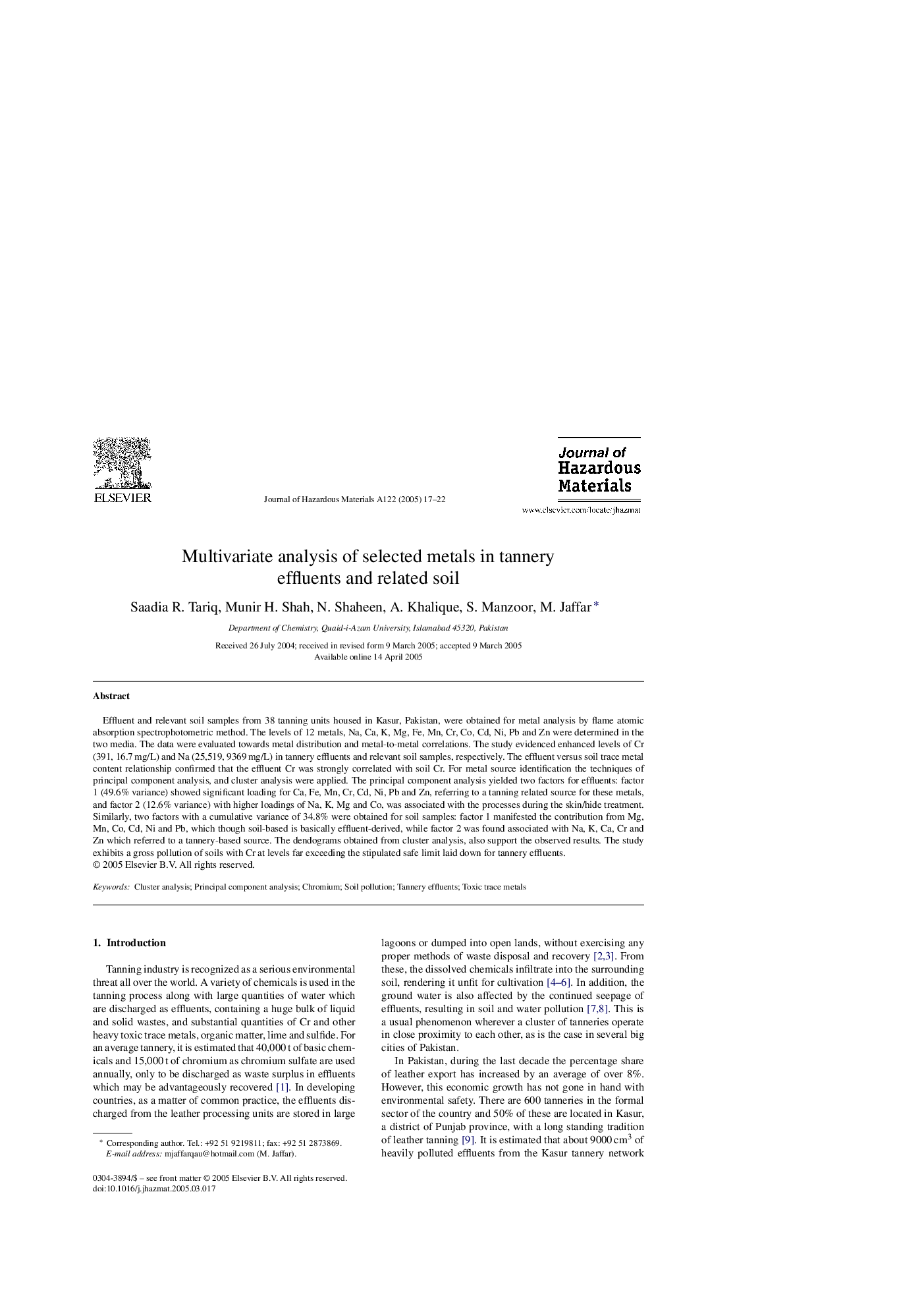| Article ID | Journal | Published Year | Pages | File Type |
|---|---|---|---|---|
| 9674232 | Journal of Hazardous Materials | 2005 | 6 Pages |
Abstract
Effluent and relevant soil samples from 38 tanning units housed in Kasur, Pakistan, were obtained for metal analysis by flame atomic absorption spectrophotometric method. The levels of 12 metals, Na, Ca, K, Mg, Fe, Mn, Cr, Co, Cd, Ni, Pb and Zn were determined in the two media. The data were evaluated towards metal distribution and metal-to-metal correlations. The study evidenced enhanced levels of Cr (391, 16.7Â mg/L) and Na (25,519, 9369Â mg/L) in tannery effluents and relevant soil samples, respectively. The effluent versus soil trace metal content relationship confirmed that the effluent Cr was strongly correlated with soil Cr. For metal source identification the techniques of principal component analysis, and cluster analysis were applied. The principal component analysis yielded two factors for effluents: factor 1 (49.6% variance) showed significant loading for Ca, Fe, Mn, Cr, Cd, Ni, Pb and Zn, referring to a tanning related source for these metals, and factor 2 (12.6% variance) with higher loadings of Na, K, Mg and Co, was associated with the processes during the skin/hide treatment. Similarly, two factors with a cumulative variance of 34.8% were obtained for soil samples: factor 1 manifested the contribution from Mg, Mn, Co, Cd, Ni and Pb, which though soil-based is basically effluent-derived, while factor 2 was found associated with Na, K, Ca, Cr and Zn which referred to a tannery-based source. The dendograms obtained from cluster analysis, also support the observed results. The study exhibits a gross pollution of soils with Cr at levels far exceeding the stipulated safe limit laid down for tannery effluents.
Related Topics
Physical Sciences and Engineering
Chemical Engineering
Chemical Health and Safety
Authors
Saadia R. Tariq, Munir H. Shah, N. Shaheen, A. Khalique, S. Manzoor, M. Jaffar,
